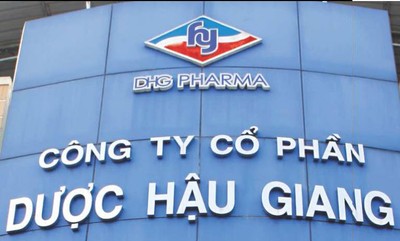India left behind as others rush into Myanmar
India left behind as others rush into Myanmar
Prime Minister Manmohan Singh seeks to make up lost ground in the charge to secure resources and business ties in Myanmar when he next week becomes India’s first leader to visit its eastern neighbor in a quarter of a century.
India, which in British colonial days oversaw the monetary and financial system of what was then Burma, ranked 13th last year in investments in Myanmar, with $189 million pledged in five projects, according to data compiled by IHS Global Insight. China led with $8.3 billion, and South Korea, whose president visited Myanmar earlier this month, pledged $2.95 billion.
“There is a huge gold rush going on in Myanmar right now and everyone is jockeying for position,” said Rajiv Biswas, chief economist in Singapore at IHS. “India is being left behind. They are not as aggressive in their economic diplomacy as countries like China and South Korea.”
India is resurrecting ties to a neighbor with 64 million people and reserves of natural gas and lumber, as Myanmar reconnects with the global economy following five decades of isolation during military rule. Also on the agenda for Singh’s three-day trip is cooperation to contain insurgent groups with bases in Myanmar that have sought independence or greater autonomy for some of India’s northeastern states.
Next ‘frontier’
The Indian prime minister, beset by political challenges at home that have seen his economic agenda stymied and contributed to a sell-off in the rupee, arrives in Myanmar May 27. Singh, 79, will meet Myanmar’s leaders as well as pro-democracy icon Aung San Suu Kyi, according to the Indian Foreign Ministry. He brings a business delegation to discuss trade and investment.
Myanmar Prime Minister Thein Sein’s efforts to end military rule have been rewarded with an easing of U.S. and European sanctions, bolstering prospects for a nation the International Monetary Fund said in January could be “the next economic frontier in Asia.” South Korean President Lee Myung Bak last week pledged to increase aid to Myanmar and the countries agreed to enhance cooperation on energy and developing resources.
Singh will relax terms on a $500 million line of credit, announce a new bus service between India’s northeast and the tourist city of Mandalay and oversee the opening of branches of Indian banks, according to an Indian Foreign Ministry official who asked not to be named because he isn’t authorized to speak publicly on the matter.
Rebel groups
“Indian companies are conservative and have been worried about stability in the country,” said Rajiv Bhatia, India’s ambassador to Myanmar between 2002 and 2005. “The government can and should be doing much more to hold their hands.”
On the foreign-policy front, Singh may address the issue of rebel guerrillas from India’s Manipur state whom his government says continue to find refuge in the forests of Myanmar. A number of leading insurgent groups in India’s northeast have already signed cease-fire agreements after decades of fighting.
Under British colonial rule, India and Burma’s economic systems were closely integrated. Burma used the Indian rupee and shared the Reserve Bank of India as its central bank, according to Sean Turnell, an economics professor at the Macquarie University in Sydney. Today, India is Myanmar’s fourth-largest trading partner, after China, Thailand and Singapore.
Natural gas
Turnell, who is currently in Myanmar conducting research, said he has seen few Indian businessmen. There were many western executives for the first time and fewer Chinese, a result of more competition from other countries, he said.
India approved in 2010 plans for Oil & Natural Gas Corp. (ONGC) and GAIL India Ltd. (GAIL) to invest a combined $1.3 billion in a natural gas project in Myanmar. Tata Motors Ltd. (TTMT), India’s biggest commercial-vehicle maker, said in March last year it will help set up a factory in Myanmar to build trucks.
Myanmar’s economy is set to grow 6 percent in the fiscal year ending March 31, the fastest pace since 2006, on higher natural gas sales and government measures to make it easier to do business, according to the Asian Development Bank. The country has one of the lowest per capita gross domestic products in Asia, according to IMF estimates.
1990 elections
The nation bordering China and India and with the second- largest land area in Southeast Asia behind Indonesia earlier this year implemented its biggest economic policy shift since Thein Sein took office a year ago. The central bank scrapped a 35-year fixed currency system in April, and is moving to unify multiple exchange rates for the kyat that have discouraged trade and foreign direct investment, according to the IMF.
The last Indian prime minister to visit Myanmar was Rajiv Gandhi in 1987. The next year marked the public emergence of Suu Kyi, daughter of a Myanmar independence hero. She was first detained before 1990 elections in which her party won about 80 percent of seats for a committee that was designed to draft a new constitution. The military rejected the results.
Besides Lee from South Korea, U.K. Prime Minister David Cameron, U.S. Secretary of State Hillary Clinton and United Nations Secretary-General Ban Ki-moon have visited Myanmar in recent months.
“Myanmar is back on the world’s radar,” Edward Lee, an economist at Standard Chartered Plc in Singapore, wrote in a research note this month. “Myanmar is undoubtedly a country of rich potential, but fulfilling that potential will be another matter as it plays catch-up with its neighbors after decades of political and economic isolation.”
BLOOMBERG














